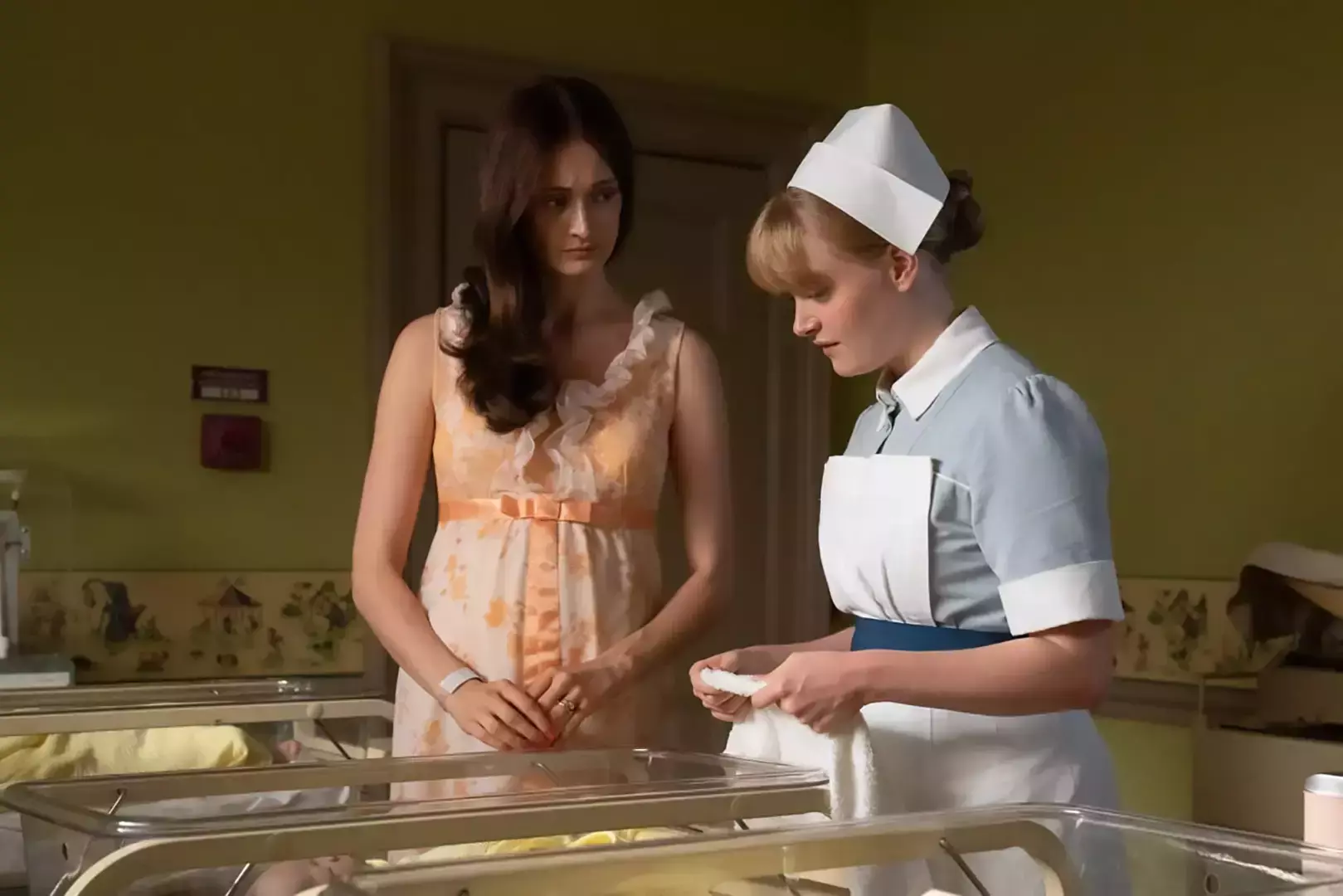In these days of global and political chaos, I am making a point of looking for moments of peace. Of all the trauma and suspense depicted in Episode 3, there was a singularly peaceful scene that struck a pleasant chord of nostalgia. As I watched student midwife Rosalind Clifford teach her first postpartum class and thank her model, the beaming new mother, Gillian Baxter, it took me back to my rewarding days as a childbirth educator.
In 1975, six years after the time portrayed in this season of Call the Midwife and two decades before I received my certification as a nurse-midwife, there was a burgeoning consumer-driven campaign in the Detroit area aimed at changing hospital birth practices. Routine spinal anesthetic, episiotomies, and forceps deliveries were routine. A combination of drugs called “Twilight Sleep" was given in labor and caused women to hallucinate. They put the screaming, thrashing women in leather restraints for their safety and the safety of staff.
The United States had few professionally trained nurse-midwives and few female obstetricians. In fact, the first nurse-midwife in Michigan was credentialed in 1980. I knew only of a few lay midwives trained informally as apprentices to other lay midwives, maligned by the medical establishment and banned from hospitals. They helped women who were terrified of hospital treatment and instead helped them give birth at home. The institutional hostilities resulted in dangerously inadequate backup services for home births in case of emergencies. Rarely was informed consent provided for exams and interventions.
Civil Rights and Women’s Rights movements in my place and time inspired a rethinking of childbirth rights as well. After obtaining the right to legal and safe abortion just two years earlier, 1975 was a ripe time for addressing reproductive rights and bodily autonomy during childbirth. It was time to push for women’s rights to have a choice of where, how, and with whom they choose to birth. But these progressive developments weren’t openly received by everyone. I can remember hearing physicians dismissively refer to women seeking such choices as the “lunatic fringe”.
This underground movement was often led by nurses whose own birthing experiences had been traumatic. The classes were a combination of philosophies and techniques from Grantley Dick-Read’s book, Childbirth without Fear and Marjorie Karmel’s book, Thank you, Dr. Lamaze. Both were controversial at the time.
News of the classes was spread by word of mouth and on handmade flyers appearing on grocery store and church bulletin boards. Weekly classes were held in church basements, community centers, or school gymnasiums in the evening. By the 1980s, childbirth education was offered by hospitals where content could be censored and controlled. However, in the 1970s, we were still considered radicals – the “lunatic fringe” hiding in the shadows, teaching women to speak out and resist unnecessary interventions during childbirth.
I was a new graduate nurse and appalled by the disrespect I witnessed in hospitals during labor and delivery. I wanted to empower women to take control of their birthing experiences. Childbirth education was the way. I was introduced to a local group, “The Childbirth Preparation Association.” Childbirth educators in this group were mothers who had taken leave from their nursing careers to care for their young children. Teaching childbirth classes in the evening allowed them to utilize their nursing knowledge and heal from feelings of powerlessness. As I had not yet experienced birth firsthand, my credibility and motivation to teach childbirth were questioned. A debate about my suitability ensued. I argued that my status as a working nurse in labor and delivery not only gave me a special sort of authority but also a valuable ongoing insight into changing practices and barriers to change. I was on the front lines of the war we were passionately fighting. After much discussion and debate, they acquiesced.
The class curriculum included physiology of labor, birth, hospital interventions with risks and benefits, alternative labor management techniques, postpartum, newborn care, and breastfeeding. The classes usually contained ten to twelve couples – not huge groups, but still an intense and invested audience. My shaking hands, nausea, and quivering voice gradually subsided as my confidence increased with the repetition of course content. Over time, I looked forward to each seven-week session. I loved getting to know the couples and becoming part of their pregnancy experience.
The last session of the series was held postpartum. To see the couples come in with their new babies was a special thrill. To hear accounts of their labors and births was a testament to the difference my teaching had made. Making a difference to even one woman, one family, felt important. That is the draw for so many of us who are pulled into midwifery. The importance and satisfaction of educating women to make informed and safe choices is undeniable.
